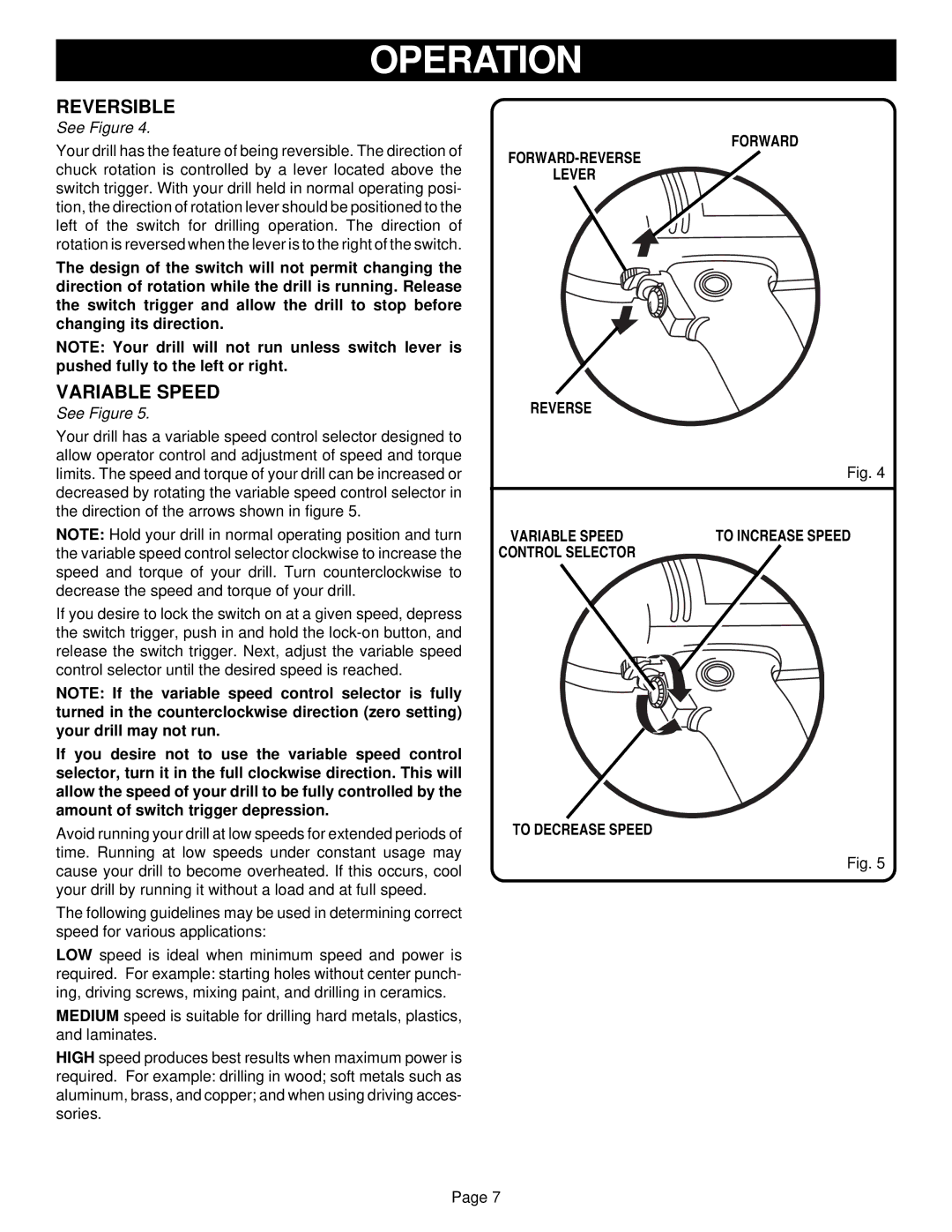D28VSR specifications
The Ryobi D28VSR is a powerful variable speed reversible drill that stands out for its reliability and performance, making it a favorite among both professionals and DIY enthusiasts. With its robust construction and innovative design, the D28VSR delivers excellent functionality for a variety of drilling applications.One of the main features of the Ryobi D28VSR is its 1/2-inch keyless chuck. This feature allows for fast and easy bit changes without the need for additional tools, enhancing convenience, especially in time-sensitive tasks. The drill boasts a variable speed control that ranges from 0 to 2,600 RPM, providing users with the flexibility to choose the appropriate speed for different materials. This makes it ideal for drilling into wood, metal, and even plastic with optimal precision.
Another notable characteristic of the D28VSR is its power. The drill is equipped with a 7-amp motor which offers the necessary torque to effectively handle tough jobs. Coupled with its reversible function, the D28VSR allows users not only to drill but also to remove screws effortlessly, making it a versatile addition to any tool collection.
The ergonomic design of the Ryobi D28VSR contributes to its user-friendliness. The rubber grip handle ensures comfort during prolonged use and enhances control, reducing the likelihood of slipping. Additionally, the drill features a built-in LED light, illuminating the work area, which is particularly beneficial in dimly lit spaces.
Moreover, the D28VSR includes a depth gauge, allowing precise control over drill depth. This feature is particularly useful for tasks that require consistent depths, such as cabinetry or furniture assembly. The drill's durable construction ensures longevity, making it a reliable choice for those who demand durability from their tools.
Overall, the Ryobi D28VSR combines power, versatility, and user-friendly features into a compact package. Whether you're a professional contractor or a weekend warrior, this drill offers the performance required for various tasks at hand, making it an essential tool for any toolkit.

